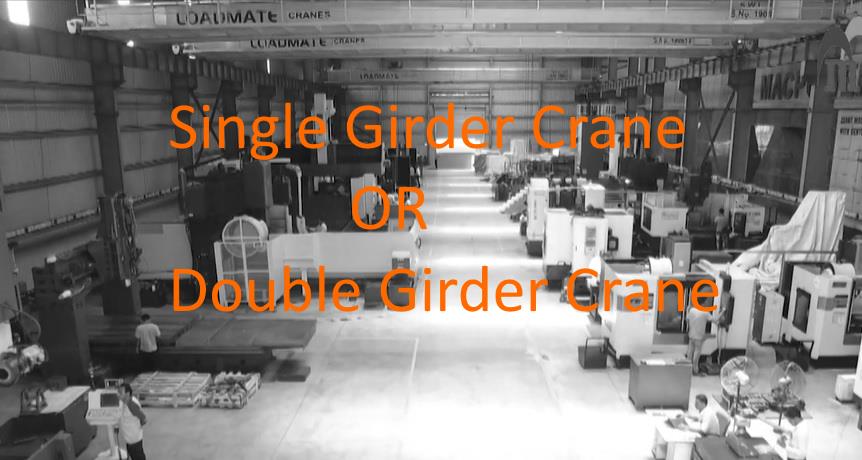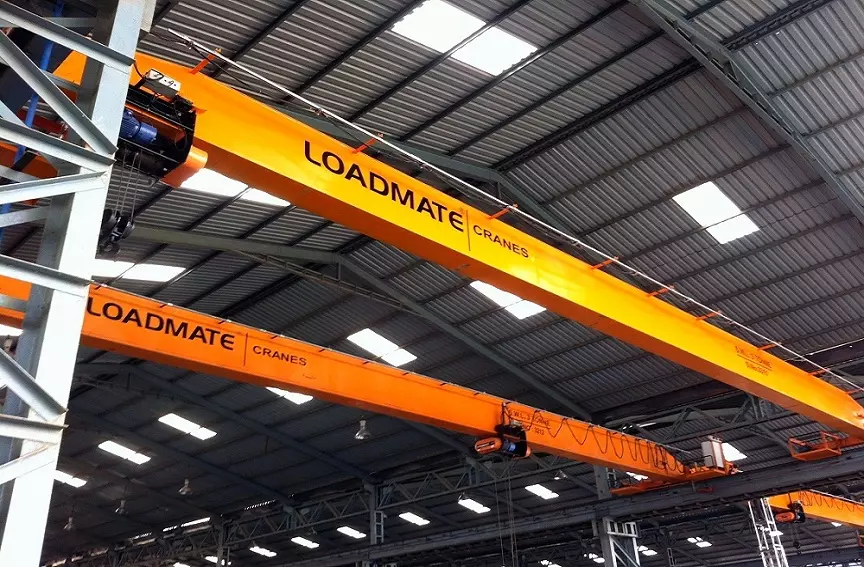Overhead cranes play an essential role in material handling, enabling industries to lift and transport heavy loads with efficiency and safety. Among the most commonly used types are
single girder cranes and
double girder cranes. These cranes differ in their design, functionality, and applications, making it crucial to choose the right one based on specific operational requirements.
1. Introduction to Overhead Cranes
Overhead cranes, also known as bridge cranes, are vital tools in industrial operations. They allow for the precise lifting and movement of heavy materials, reducing manual labor and enhancing workplace safety. These cranes are mounted on runway beams and move along tracks, covering a designated area.
2. Understanding Single Girder Cranes
A
single girder crane consists of a single horizontal beam that supports a hoist and trolley. The trolley runs along the bottom flange of the girder, while the entire structure is supported by runway beams.
Key Features of Single Girder Cranes:
- Design: Simplistic, featuring a single girder.
- Load Capacity: Suitable for lifting loads up to 20 tons.
- Span: Best for shorter spans, typically between 10–30 meters.
- Lifting Height: Limited due to the design of the single girder.
- Weight: Lightweight construction facilitates easier installation.
Single girder cranes are ideal for light-duty operations, offering cost-effective solutions for small to medium industries.
3. Understanding Double Girder Cranes
In contrast,
double girder cranes have two parallel girders supporting the hoist and trolley, which run along rails mounted atop the girders.
Key Features of Double Girder Cranes:
- Design: Robust, featuring two girders for enhanced support.
- Load Capacity: Can handle loads up to 500 tons or more.
- Span: Suitable for longer spans, extending beyond 50 meters.
- Lifting Height: Greater height capabilities due to the hoist's top-mounted position.
- Weight: Heavier construction demands stronger support structures.
Double girder cranes are indispensable in heavy industries that require high-capacity material handling solutions.
4. Key Differences Between Single and Double Girder Cranes
| Aspect |
Single Girder Crane |
Double Girder Crane |
| Design |
One girder with a hoist on the bottom flange. |
Two girders with a hoist mounted on top rails. |
| Load Capacity |
Up to 20 tons. |
Up to 500 tons or more. |
| Span |
10–30 meters. |
Up to 50 meters or more. |
| Lifting Height |
Limited. |
Greater lifting height. |
| Cost |
Lower. |
Higher. |
5. Advantages of Single Girder Cranes
- Cost-Effective: Lower manufacturing and installation costs.
- Lightweight Design: Requires less structural reinforcement.
- Energy Efficiency: Operates with lower power consumption.
- Ease of Installation: Simpler setup, even in smaller spaces.
6. Advantages of Double Girder Cranes
- High Load Capacity: Can handle significantly heavier loads.
- Flexibility: Highly customizable for specialized operations.
- Durability: Built for continuous and heavy-duty operations.
- Enhanced Features: Compatible with auxiliary hoists and platforms.
7. Applications
Single Girder Crane Applications:
- Small manufacturing units.
- Warehouses with moderate lifting needs.
- Workshops requiring simple material handling solutions.
Double Girder Crane Applications:
- Heavy manufacturing industries (e.g., automotive, steel).
- Shipyards and dockyards.
- Construction sites needing high lifting capabilities.
8. How to Choose Between the Two?
- Load Requirements: Single girder cranes for lighter loads, double girder cranes for heavy-duty tasks.
- Facility Layout: Single girder cranes fit smaller or less robust facilities.
- Budget: Single girder cranes are more cost-effective.
- Operational Demands: Double girder cranes excel in continuous and heavy-duty operations.
9. FAQs About Single and Double Girder Cranes
- Which crane type is easier to install?
Single girder cranes are easier to install due to their lightweight construction.
- Can a single girder crane handle heavy loads?
Yes, but only up to 20 tons, depending on the model.
- Are double girder cranes more expensive to maintain?
Yes, due to their complex design and robust components.
- What industries commonly use double girder cranes?
Heavy industries like steel plants, shipyards, and large warehouses.
- Can I upgrade a single girder crane to a double girder crane?
No, as the designs are fundamentally different.
- Which crane offers better lifting height?
Double girder cranes provide superior lifting heights.
10. LOADMATE: A Trusted Provider of Overhead Cranes
LOADMATE offers a comprehensive
range of overhead EOT cranes, including single and double girder variants. All products meet Indian and international standards, ensuring safety, durability, and performance. Contact our experts to
know more about different types of cranes and their features.




